Advertisements
Advertisements
Question
From the given graph, choose the letters that indicate the location of the points given below.
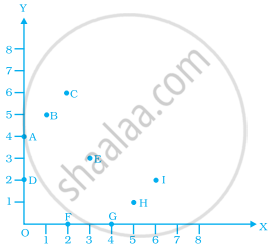
- (2, 0)
- (0, 4)
- (5, 1)
- (2, 6)
- (3, 3)
Solution
On observing the graph, we see that the point F is on X-axis, so its Y-coordinate will be zero.
Also, it is at a distance of 2 units from origin.
... The coordinates of F are (2, 0), similarly the coordinates of G are (4, 0).
H is at a distance of 5 units from Y-axis and 1 unit from X-axis.
... The coordinates of H are (5, 1).
D is at a distance of 6 units from Y-axis and 2 units from X-axis.
... The coordinates of D are (6, 2).
The point D and A are on Y-axis at distances of 2 units and 4 units respectively from the origin.
Hence, the coordinates of D and A are (0, 2) and (0, 4), respectively.
B is at a distance of 1 unit from Y-axis and 5 units from X-axis.
... The coordinates of B are (1, 5).
C is at a distance of 2 units from Y-axis and 6 units from X-axis.
... The coordinates of C are (2, 6).
E is at a distance of 3 units from Y-axis and X-axis both.
... The coordinates of E are (3, 3).
APPEARS IN
RELATED QUESTIONS
Find the coordinates of points A, B, C, D in Fig. 27.7.
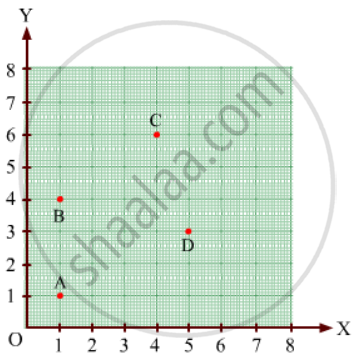
Decide which of the following statements is true and which is false. Give reasons for your answer.
Points whose x and y coordinates are equal, lie on a line passing through the origin.
The following table shows the amount of rice grown by a farmer in different years:
| Years: | 2000 | 2001 | 2002 | 2003 | 2004 | 2005 | 2006 |
| Rice grown (in quintals): | 200 | 180 | 240 | 260 | 250 | 200 | 270 |
Plot a graph to illustrate this information.
In the given figure the position of the book on the table may be given by ______.
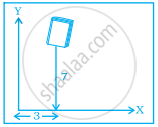
A point has 5 as its x–coordinate and 4 as its y–coordinate. Then the coordinates of the point are given by ______.
Match the coordinates given in Column A with the items mentioned in Column B.
| Column A | Column B |
| (1) (0, 5) | (a) y coordinate is 2 × x - coordinate + 1. |
| (2) (2, 3) | (b) Coordinates of origin. |
| (3) (4, 8) | (c) Only y–coordinate is zero. |
| (4) (3, 7) | (d) The distance from x-axis is 5. |
| (5) (0, 0) | (e) y coordinate is double of x-coordinate. |
| (6) (5, 0) | (f) The distance from y-axis is 2. |
Explain the situations represented by the following distance-time graph.
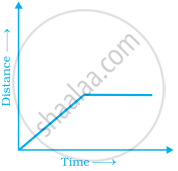
The table given below shows the temperatures recorded on a day at different times.
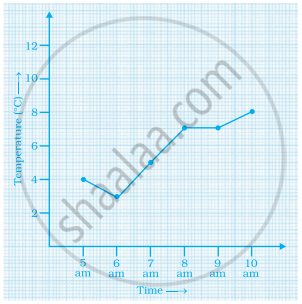
Observe the table and answer the following questions.
- What is the temperature at 8 am?
- At what time is the temperature 3°C?
- During which hour did the temperature fall?
- What is the change in temperature between 7 am and 10 am?
- During which hour was there a constant temperature?
Draw a parallelogram ABCD on a graph paper with the coordinates given in Table I. Use this table to complete Tables II and III to get the coordinates of E, F, G, H and J, K, L, M.
| Point | (x, y) |
| A | (1, 1) |
| B | (4. 4) |
| C | (8, 4) |
| D | (5, 1) |
Table I
| Point | (0.5x, 0.5y) |
| E | (0.5, 0.5) |
| F | |
| G | |
| H |
Table II
| Point | (2x, 1.5y) |
| J | (2, 1.5) |
| K | |
| L | |
| M |
Table III
Draw parallelograms EFGH and JKLM on the same graph paper.
Plot the points (2, 4) and (4, 2) on a graph paper, then draw a line segment joining these two points.
The two graphs below compare Car A and Car B. The left graph shows the relationship between age and value. The right graph shows the relationship between size and maximum speed.
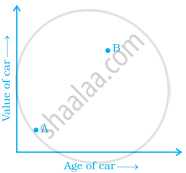 |
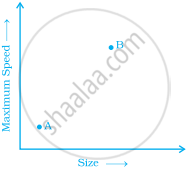 |
Use the graphs to determine whether each statement is true or false, and explain your answer.
- The older car is less valuable.
- The faster car is larger.
- The larger car is older.
- The faster car is older.
- The more valuable car is slower.
